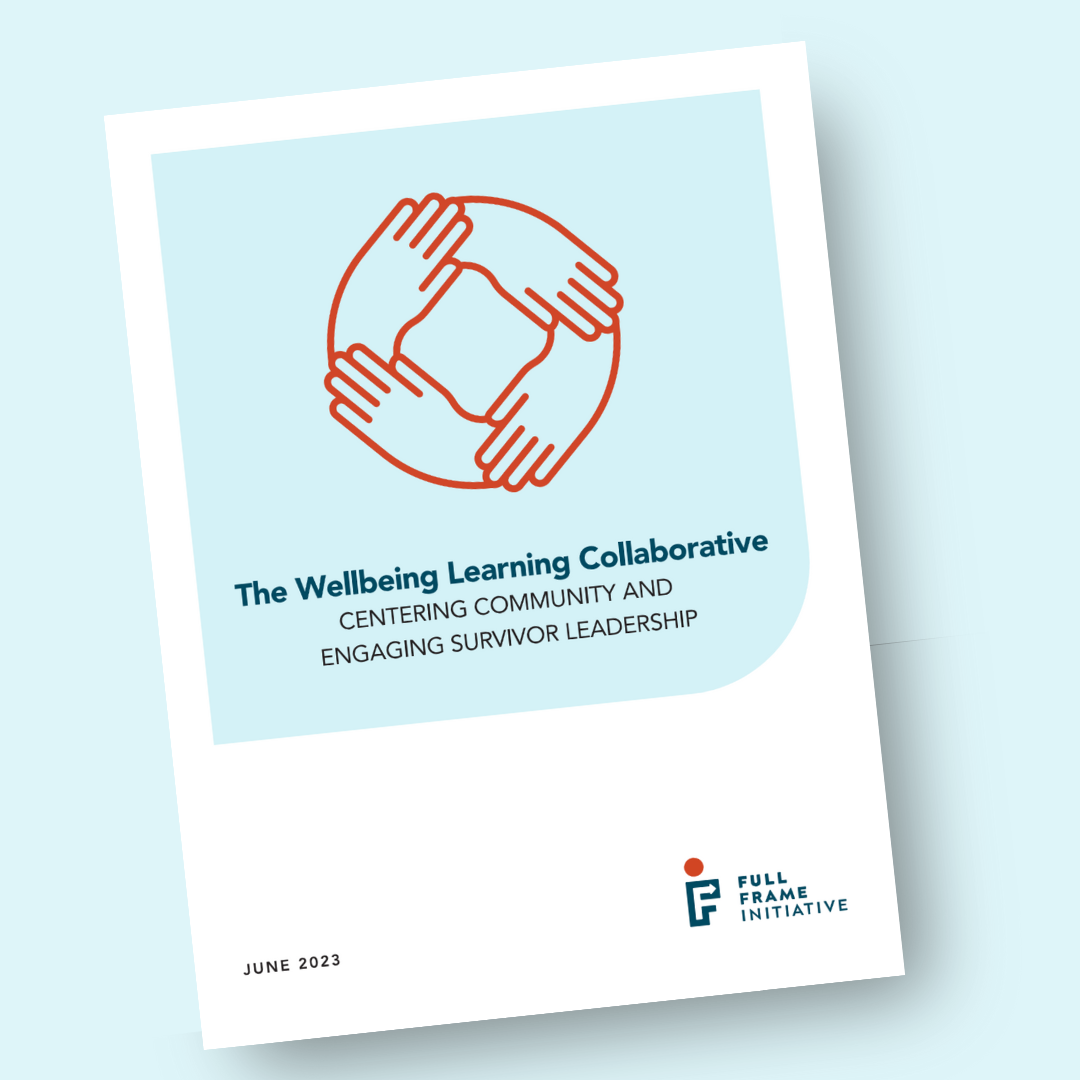
A group of organizations working in domestic violence in Massachusetts contributed to this report on centering community and engagement survivor leadership as a way to support access to wellbeing.

This working paper critiques the over-reliance on evidence-based models in social policy and presents alternative approaches to avoid potential harm.
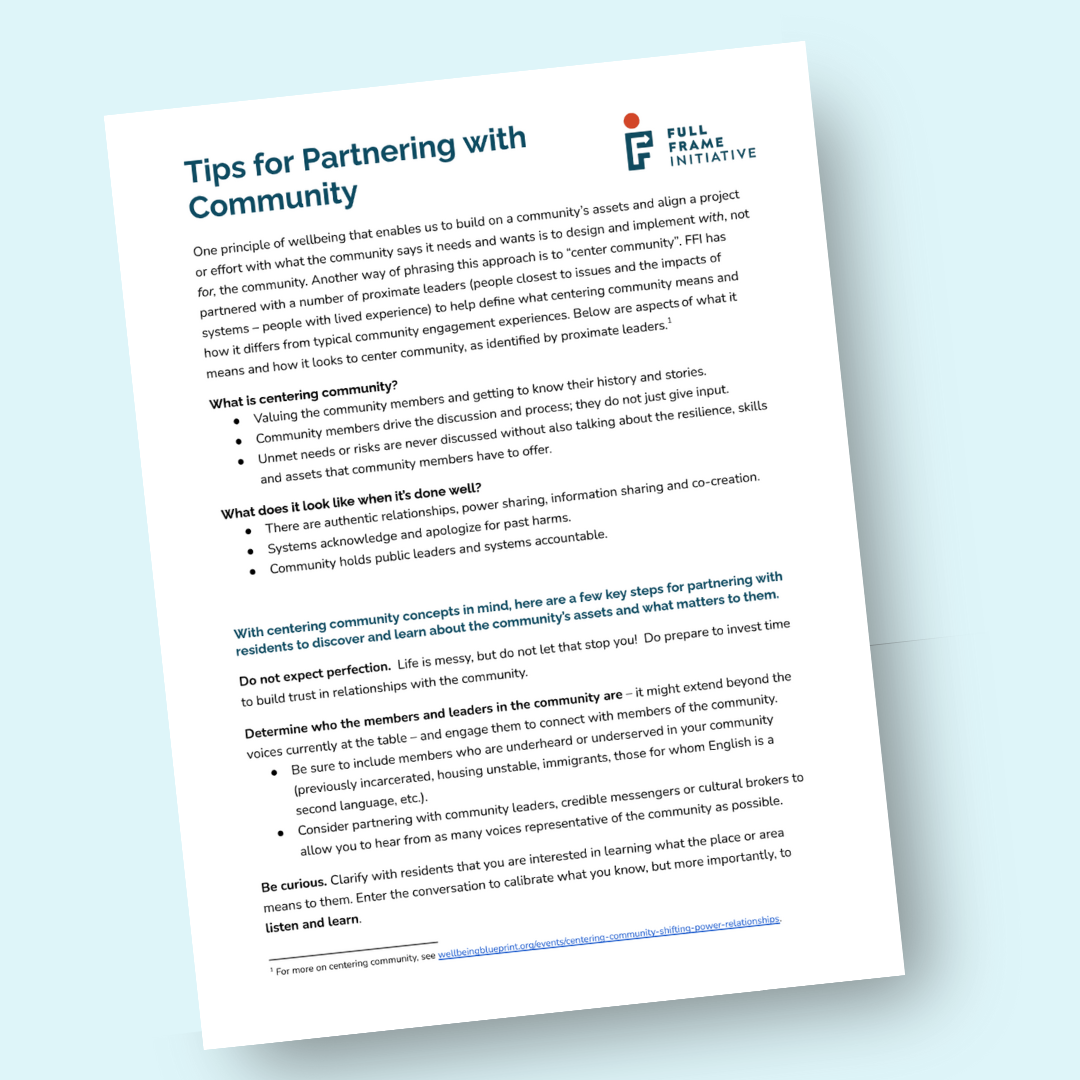
This document offers tips for centering community in decision-making through deeper, more meaningful partnerships beyond traditional engagement methods.
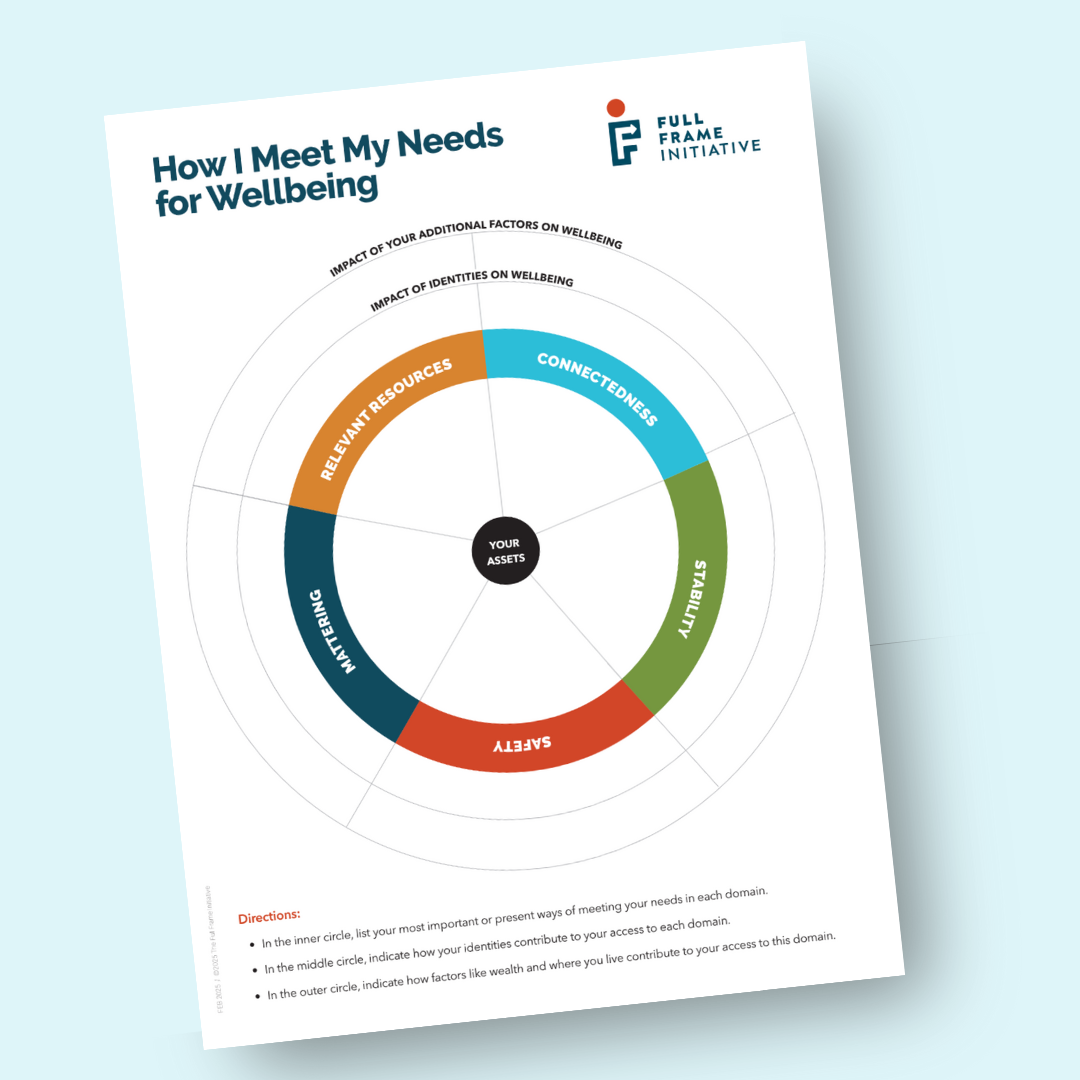
This worksheet helps users assess how their identity and other factors influence their wellbeing across the Five Domains, guiding the design of wellbeing-centered solutions.
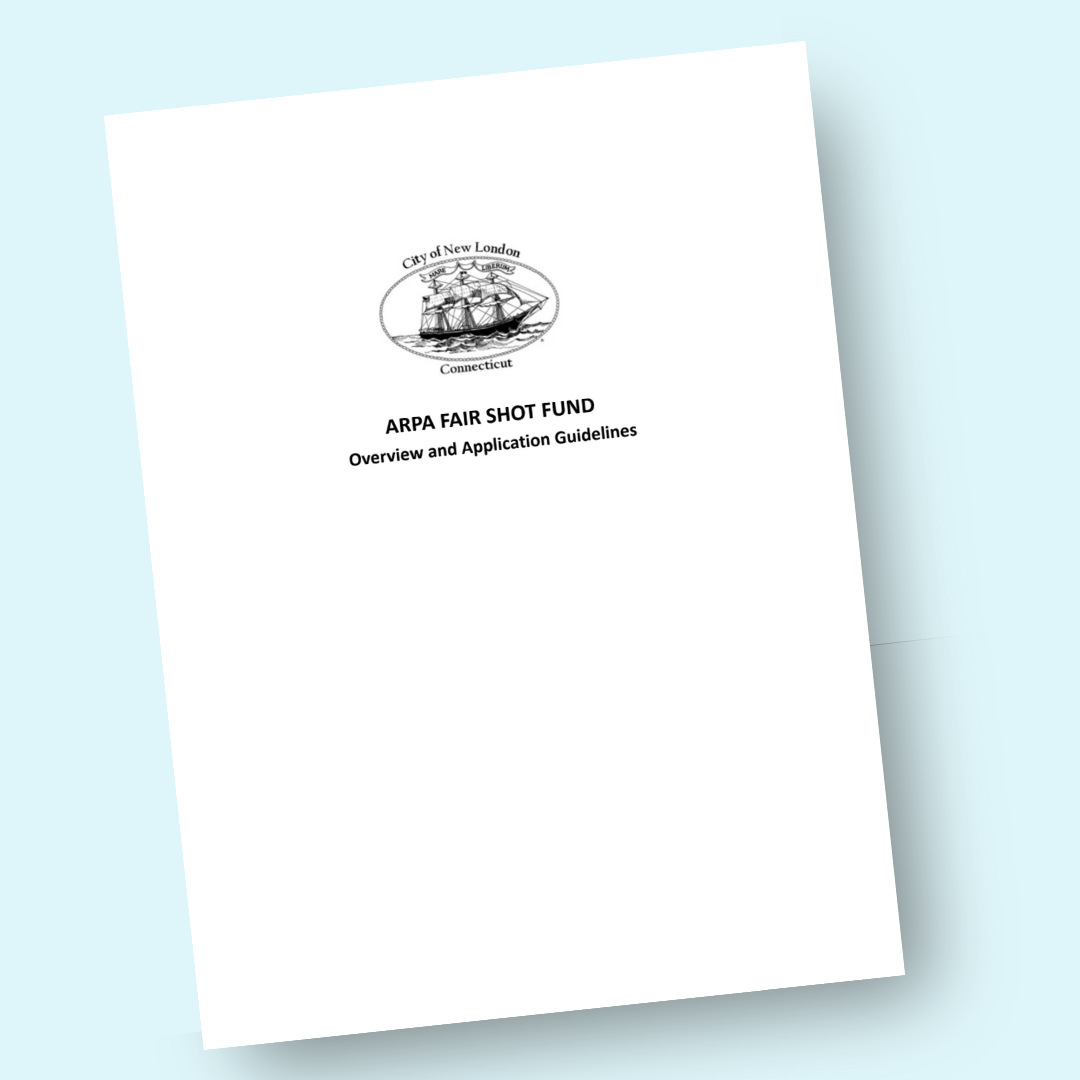
This example highlights how the City of New London integrated wellbeing into its procurement process to promote equity through RFPs.
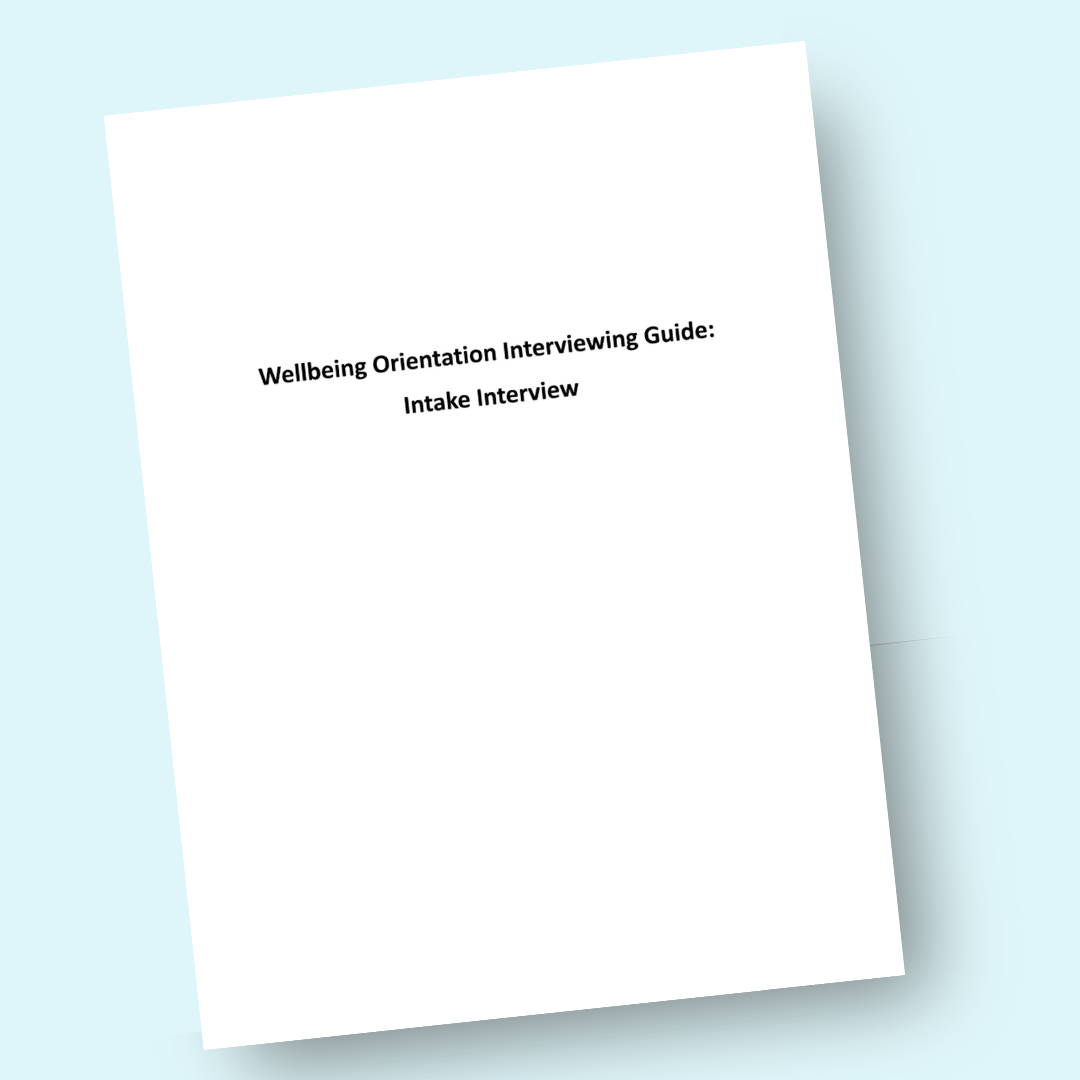
This guide offers conversational intake questions to uncover a fuller picture of individuals' wellbeing assets and tradeoffs, moving beyond a traditional Q&A approach.

This resource introduces Community Wellbeing Asset Mapping as a strengths-based approach that highlights what’s working in a community to support more accurate, wellbeing-centered decision-making.

This example showcases how the Neighborhood Action Council of North Flint used Community Wellbeing Asset Mapping to highlight community strengths and support more informed decision-making.

This guide helps you assess risks and when to escalate them.

This resource uses a dual-image exercise and facilitation guide to illustrate how bias and confirmation can limit our perspectives.

Allie’s story shows how system-designed solutions that overlook a person’s full life context can unintentionally cause harm.
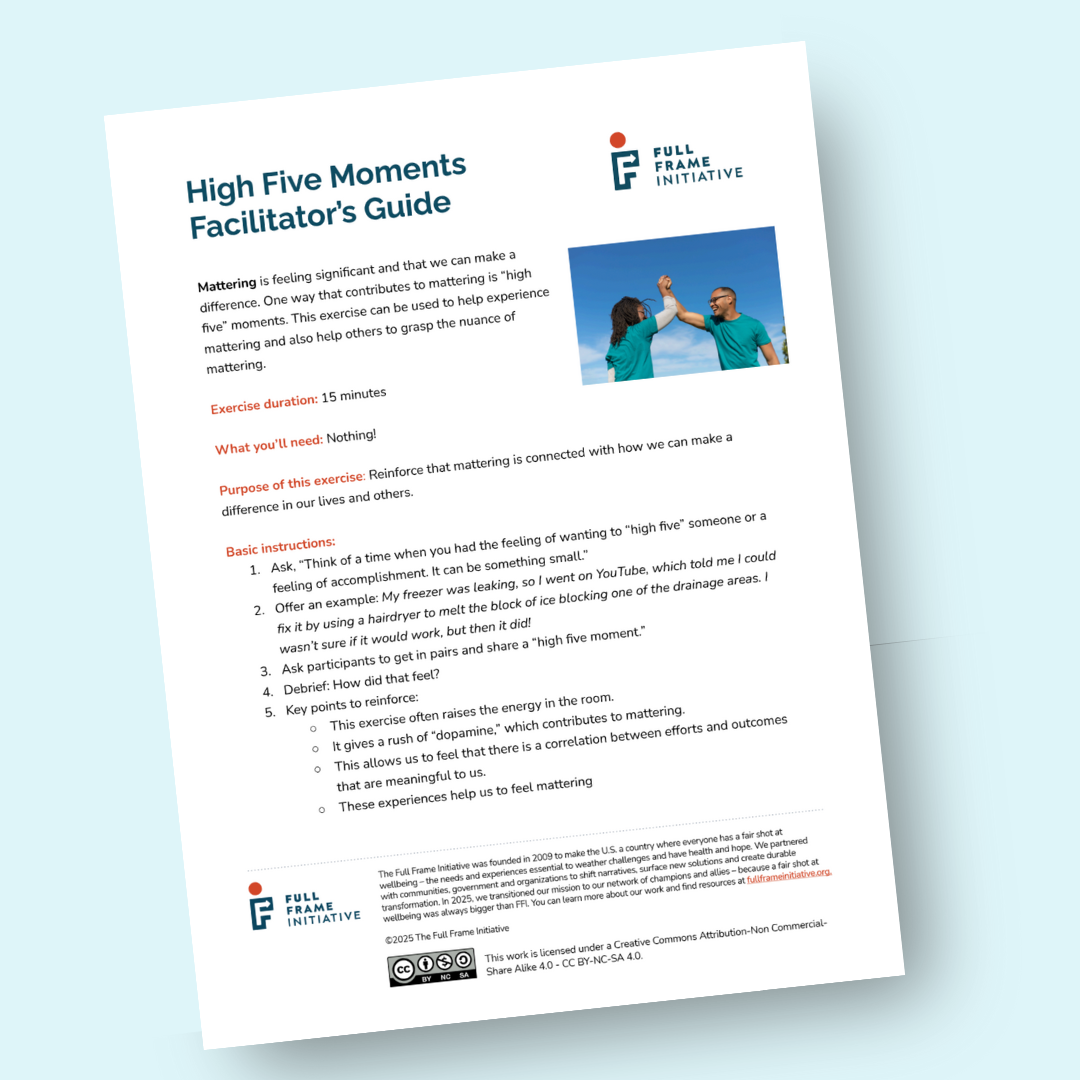
This exercise fosters a sense of mattering by encouraging 'high five' moments that celebrate achievements and illustrate the impact of being seen and valued.